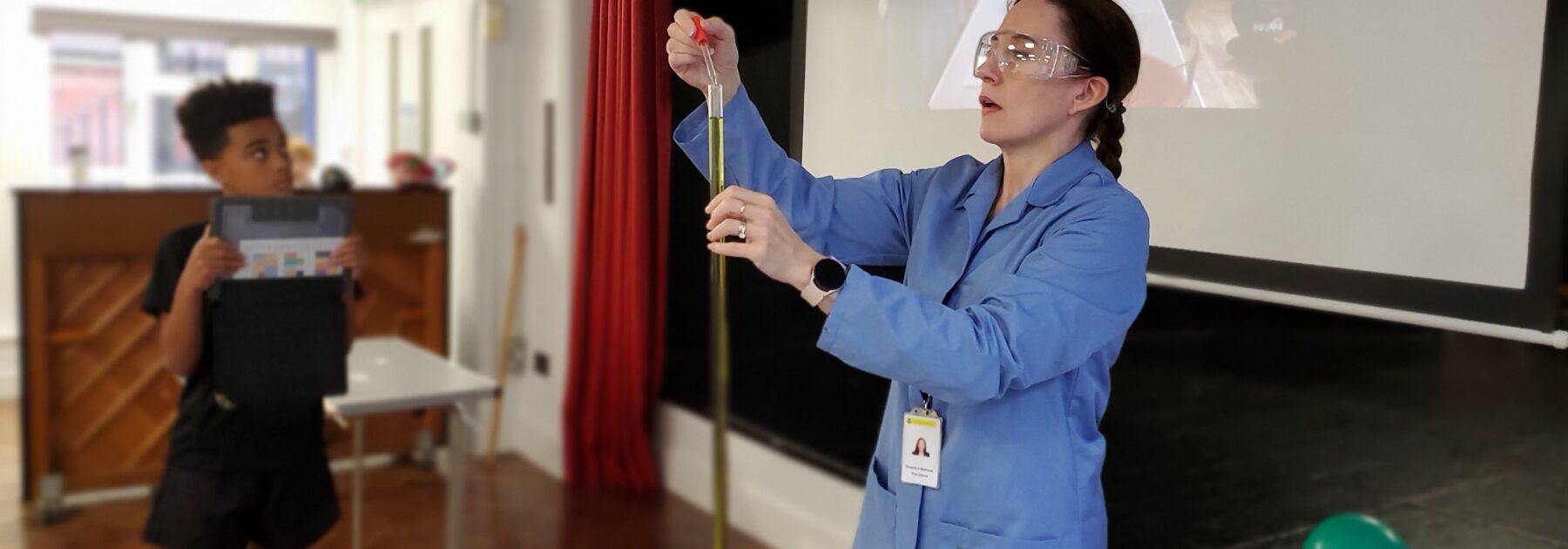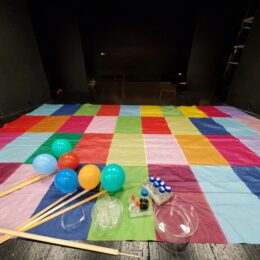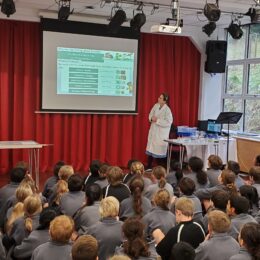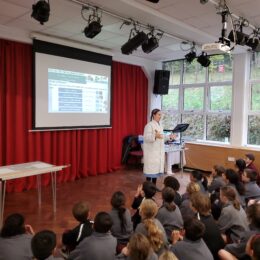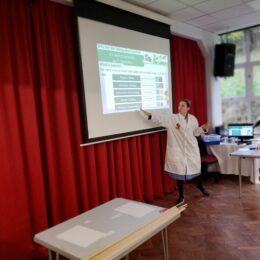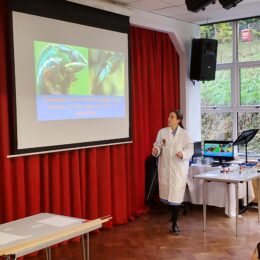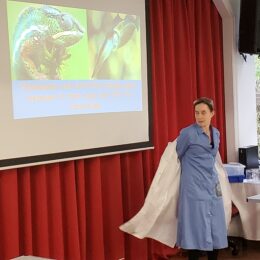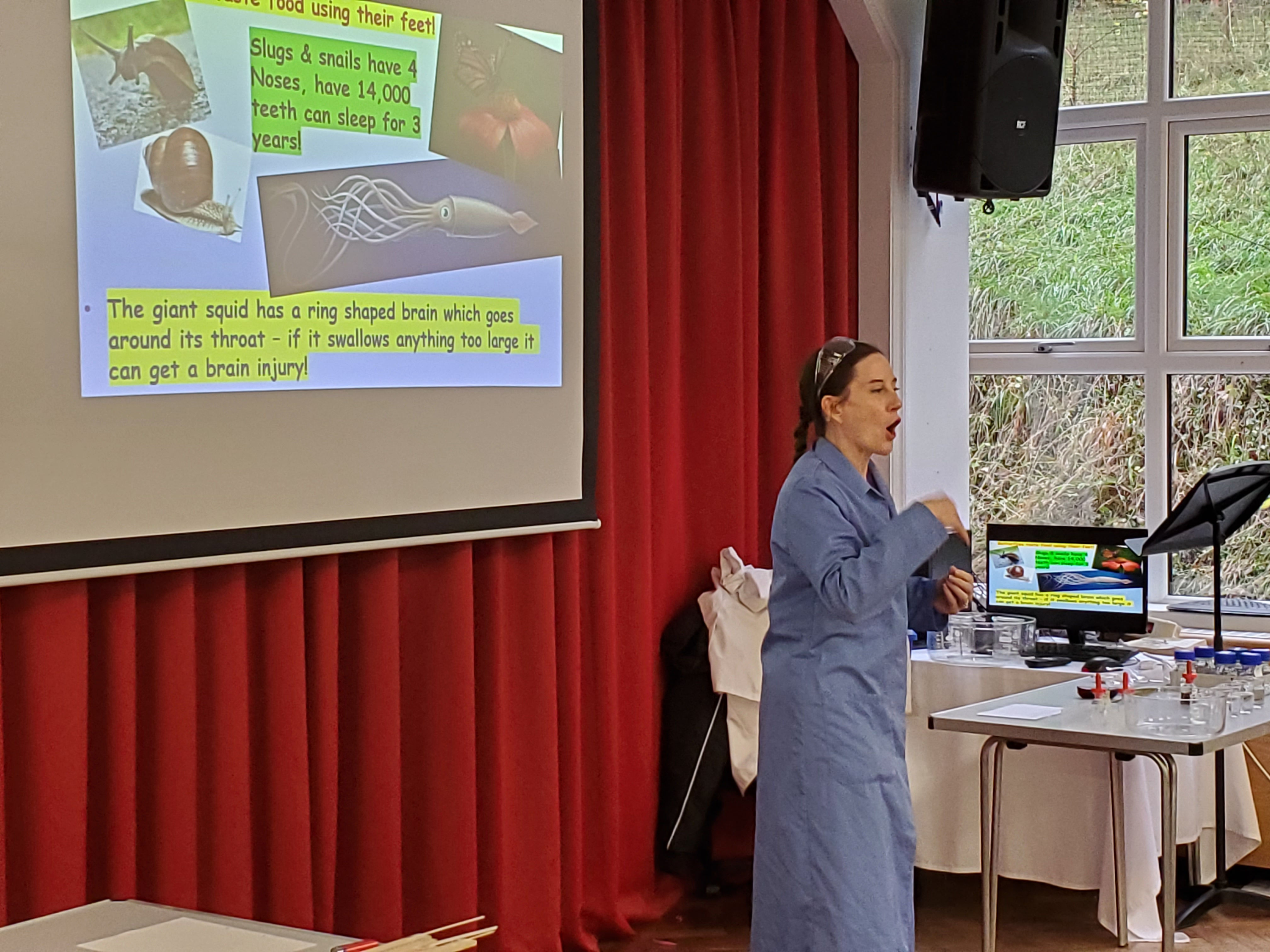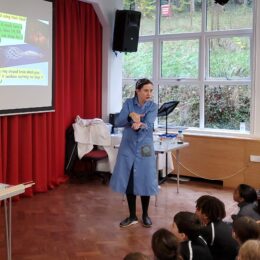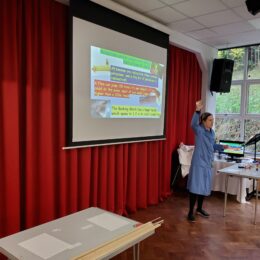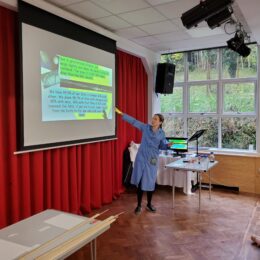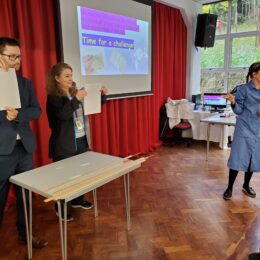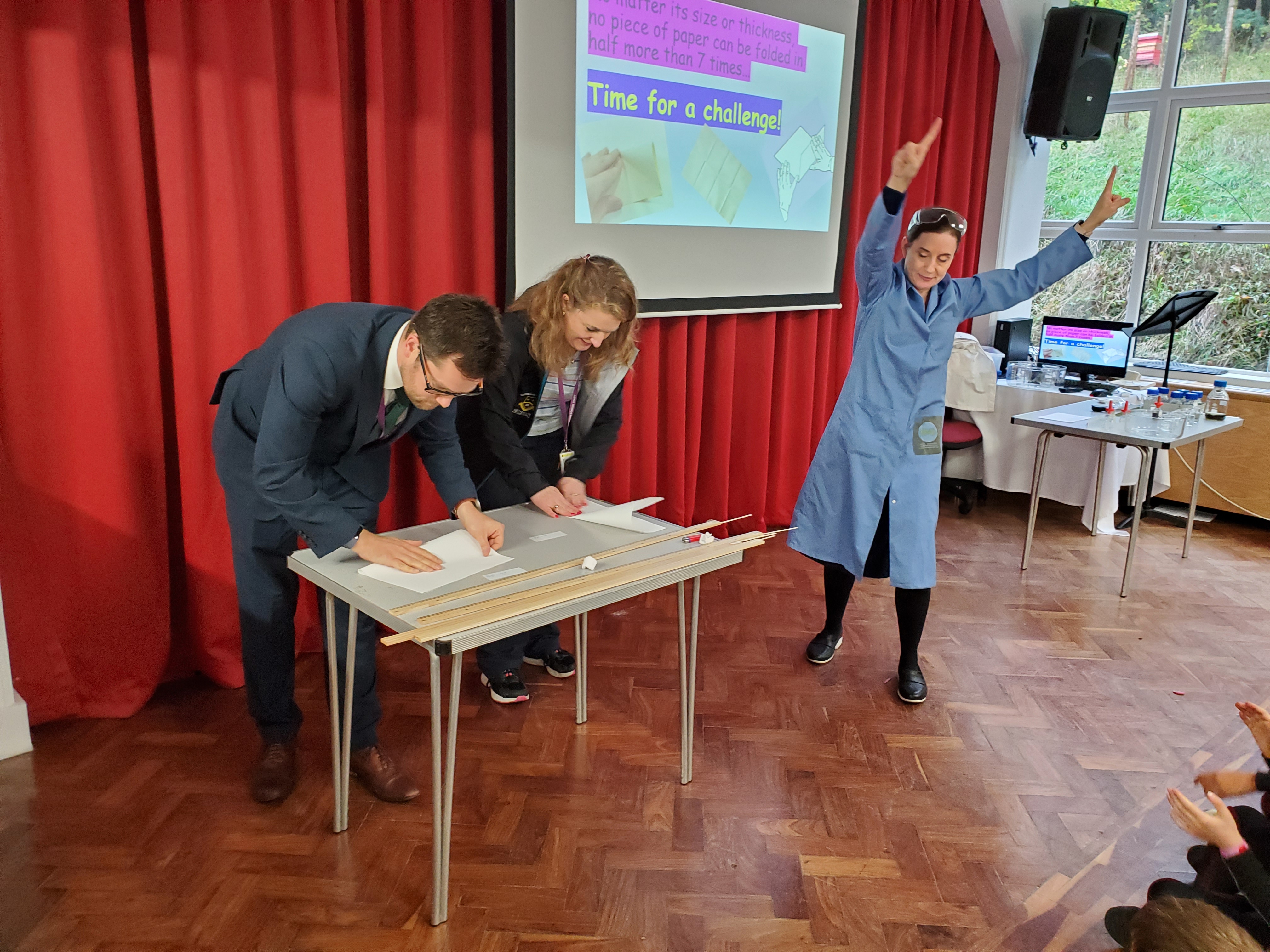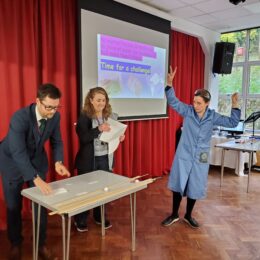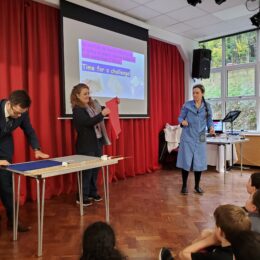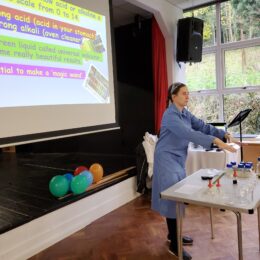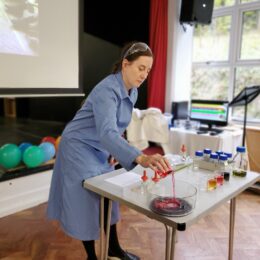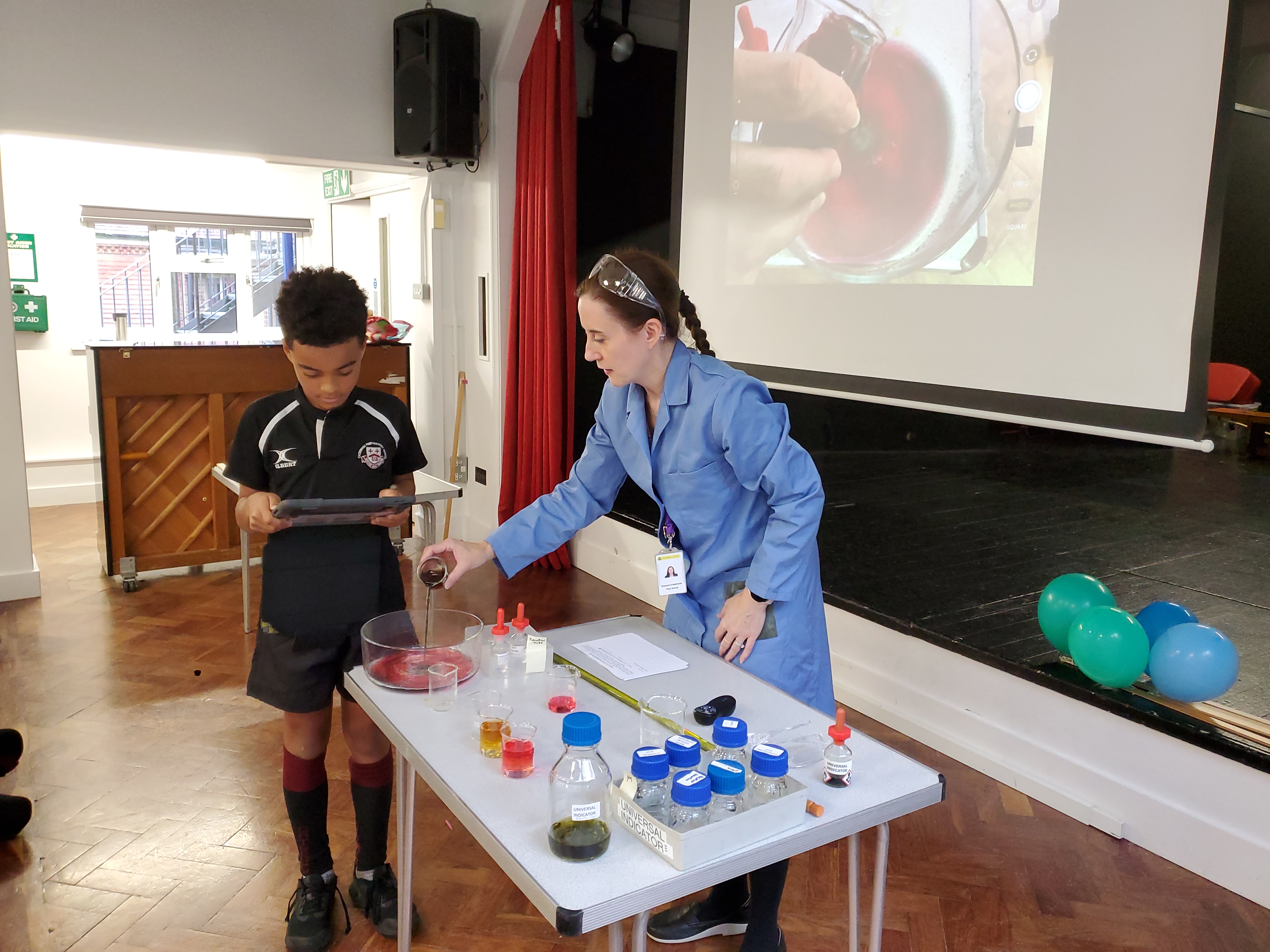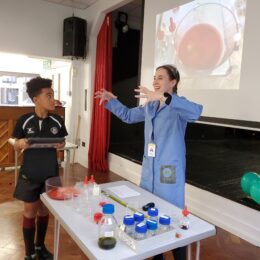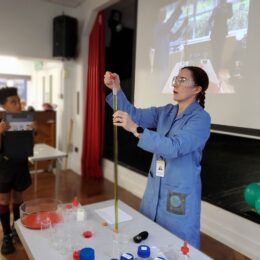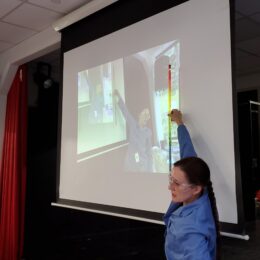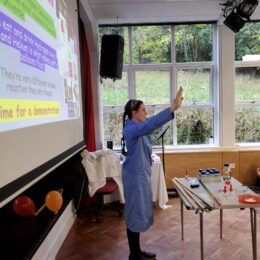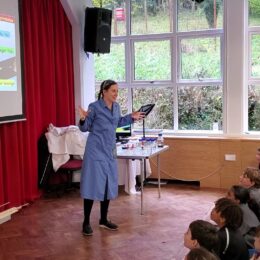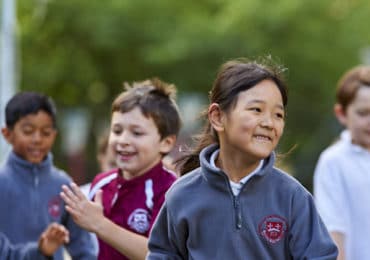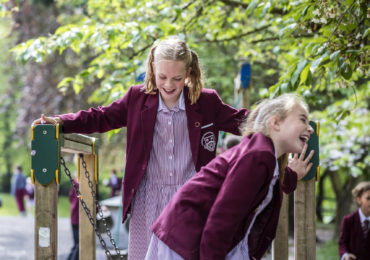World Science Day Starts with a Bang
It was a really exciting day on Monday as we celebrated World Science Day at school in full colourful, explosive style!
In the lead up to the big day, all of the children in Years 5 and 6 had been asked to dig deep to research some exciting, unusual and frankly out-of-this-world science facts. The task of trying to choose some for the assembly was immense as there were literally hundreds of awesomely fascinating, unexpected and brilliant snippets of brilliance delivered! Some which were chosen:
Chameleons and cuttlefish change colour because of their mood and not for camouflage (to which Mrs Hills-Matthews agreed and announced ‘So do scientists’ as she ripped off a white lab coat to reveal a blue one underneath!)
The giant squid has a ring shaped brain which goes around its throat, if it swallows anything too large, it can get a brain injury!
Mosquitoes prefer people with smelly feet!
All bananas are radioactive (they contain potassium and a tiny bit is radioactive)
The blue whale’s tongue weighs the same as an elephant
99.9% of our DNA is in common with each other and we share 98.7% DNA with chimps, 85% with mice, 40% with fruit flies and 41% with bananas – we literally have more in common with a banana than a fruit fly!
When it came to this fact, things got very exciting: No matter its size or thickness, no piece of paper can be folded in half more than 7 times. A challenge began with Mrs Deale and Mr Lang trying to disprove this – Mrs Hills-Matthews gave them both a series of different papers to try to disprove the fact. A4 lined paper only reached 7 folds and A3 paper just about got to 7 but it was not an easy fold from 6 as the paper was thicker – showing that perhaps thickness did play a role – so we tested this with a large piece of tissue paper. The tissue paper we got to 9 folds – so thickness did play a role, but what of size? Mrs Hills-Matthews super-sized the experiment with a giant piece hidden on the stage made of 50 pieces of tissue paper! Together the teachers carefully folded and pressed and got to 10 folds! Result: the fact was officially busted!
Mrs Hills-Matthews then went on to demonstrate that many liquids look like water but using Universal Indicator you can see a bright colour change to show they are definitely not the same. Using this same technique, she made a colourful ‘magic wand’ of the pH scale.
However, the biggest bang of the assembly was looking into this fact: Hydrogen (H) and Helium (He) are the lightest elements in the periodic table so both float if you put them in balloons. Everyone had to guess which balloons contained Hydrogen and which contained Helium…the test for this – a lit match on the end of a meter ruler. A mere pop as the match lit the balloon and it was Helium, a full-on fireball exploding in front of our eyes and we’d found the Hydrogen!
It was a really fun assembly and brought to life the enjoyment and excitement of science we all share at school.
Happy World Science Day!


